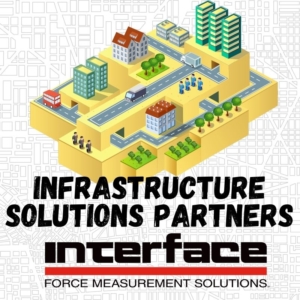Load Cells Elevate Gantry Crane Performance
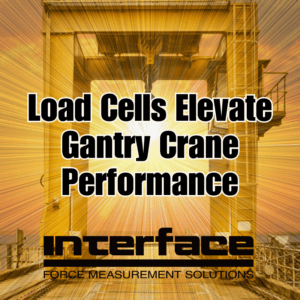 Interface provides a variety of measurement solutions for gantry crane applications. Load cells aren’t just an upgrade but a game-changer for gantry crane operations.
Interface provides a variety of measurement solutions for gantry crane applications. Load cells aren’t just an upgrade but a game-changer for gantry crane operations.
A gantry crane is an overhead crane with a horizontal beam supported by two legs traveling along a fixed track or wheels. They are used for lifting and moving heavy objects in various industrial settings, such as warehouses, shipyards, container yards, and construction sites.
Key features of gantry cranes include:
- Mobility: Unlike bridge cranes, fixed to a runway system, gantry cranes can move freely within their designated area. This makes them more versatile and suitable for outdoor applications.
- Lifting capacity: Gantry cranes can be designed to lift a wide range of weights, from a few to hundreds of tons.
- Portability: Some gantry cranes are portable and can be easily moved from one location to another.
- Versatility: Gantry cranes can be equipped with various attachments, such as hooks, magnets, and buckets, to handle a wide range of materials.
Benefits of Using Force Measurement Solutions with Gantry Cranes
Load cells, load pins, tension links, wireless telemetry systems, and instrumentation devices from Interface are valuable to makers and users of gantry cranes. These vital measurement solutions offer several safe and efficient operation benefits:
Overload Prevention
- Safety: The biggest reason is preventing crane overload. Exceeding the crane’s capacity can lead to catastrophic consequences, including equipment damage, structural failure, injuries, and even fatalities. Force measurement devices, often in the form of load cells or tension links, directly measure the weight of the lifted object, ensuring it stays within safe limits.
- Alerts and Alarm Settings: Many devices paired with specific instruments can trigger audible or visual alarms if the load approaches the limit, giving the operator time to adjust. Some advanced systems automatically shut down the lifting operation to prevent potential overload.
Improved Efficiency and Accuracy
- Optimal load handling: Knowing the exact weight of the load allows operators to position it precisely and efficiently. This is crucial for tasks like loading and unloading containers or placing heavy machinery with minimal risk of damage.
- Reduced energy consumption: By lifting only the necessary weight, you optimize energy usage by avoiding unnecessary strain on the crane’s motors and systems.
Maintenance and Inspection
- Monitoring crane health: Force measurement data can be used to track crane performance over time and identify potential issues early on. This helps with preventive maintenance and ensures the crane stays in top working condition.
- Compliance with regulations: Many workplaces have regulations requiring the monitoring of crane loads for safety reasons. Force measurement devices provide accurate data to demonstrate compliance.
Gantry Crane Applications
Tension monitoring in cable cranes: For cranes using cables instead of hydraulics, tension links measure cable tension, safeguarding against cable stress and potential breaks.
Center of gravity determination: In complex lifts with unevenly distributed weight, measuring forces at different points helps determine the load’s center of gravity, which is crucial for safe lifting and maneuvering.
Retrofitting existing cranes for safety: Crane-safe load monitoring systems are vital to crane safety. Load pins for accurate measurement are an excellent way to modernize gantry cranes. Replacing existing load-bearing pins in the crane header block to sense the load, detect the moment of lifting a load, and monitor the cranes’ maximum safe load limit.
Weighing within winch assembly: Load pins are used to measure the weight of aluminum and steel rolls. The custom load pin was designed to fit within the winch assembly, with an anti-rotation bracket to ensure correct positioning. We also supplied a large digit wall-mounted display to enable them to see resulting loads easily.
Safety measurement system: If the lifting load exceeds the safe lifting load, audible or visual alarms can be triggered, or if part of a control system, that action will automatically stop the lift. Additionally, having a real-time display of the lifted load allows crane operators to lift the maximum allowable amount, improving productivity by reducing the number of lifts required to complete a task.
To improve operational efficiency and safety, a measurement system is an excellent tool that can alert the crane operator to imminent excess lifting conditions that may cause harm to operators and equipment. Overall, force measurement devices are essential for the safe, efficient, and compliant operation of gantry cranes, making them a valuable investment for any lifting operation.
ADDITIONAL RESOURCES
Load Pins, Tension Links, & Shackles
A Great Force for Crane and Hoist Solutions
Interface Engineered Solutions for Lifting Webinar Recap
Seaside Ports are Optimizing Efficiency and Safety Using Interface Sensor Technologies
Crane Safety Requires Precision Measurements Ship to Shore
Crane Block Safety Animated Application Note
 Proof testing determines that the failure of critical components and parts could result in costly damage to equipment and even injury in severe cases. Our measurement products are designed to be used in proof testing applications.
Proof testing determines that the failure of critical components and parts could result in costly damage to equipment and even injury in severe cases. Our measurement products are designed to be used in proof testing applications.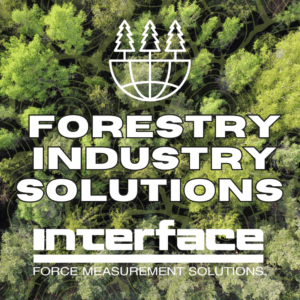 The
The 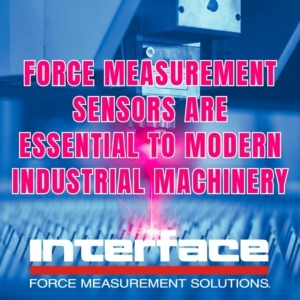 Industrial machinery plays a vital role in the global economy. It helps to improve productivity and efficiency, and it is essential to produce many of the goods we rely on daily.
Industrial machinery plays a vital role in the global economy. It helps to improve productivity and efficiency, and it is essential to produce many of the goods we rely on daily.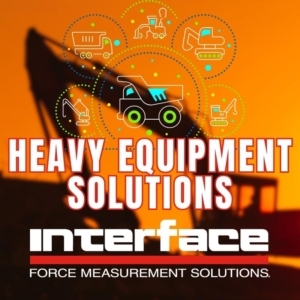 Interface has collaborated with heavy equipment design engineers and OEMs for many years by providing sensors to measure weight, torque, and force. Heavy equipment, also known as heavy machinery, is used to describe the heavy-duty machines that are vastly utilized in infrastructure,
Interface has collaborated with heavy equipment design engineers and OEMs for many years by providing sensors to measure weight, torque, and force. Heavy equipment, also known as heavy machinery, is used to describe the heavy-duty machines that are vastly utilized in infrastructure, 
